KDM5B promotes immune evasion by recruiting SETDB1 to silence retroelements
- PMID: 34671158
- PMCID: PMC8555464
- DOI: 10.1038/s41586-021-03994-2
KDM5B promotes immune evasion by recruiting SETDB1 to silence retroelements
Abstract
Tumours use various strategies to evade immune surveillance1,2. Immunotherapies targeting tumour immune evasion such as immune checkpoint blockade have shown considerable efficacy on multiple cancers3,4 but are ineffective for most patients due to primary or acquired resistance5-7. Recent studies showed that some epigenetic regulators suppress anti-tumour immunity2,8-12, suggesting that epigenetic therapies could boost anti-tumour immune responses and overcome resistance to current immunotherapies. Here we show that, in mouse melanoma models, depletion of KDM5B-an H3K4 demethylase that is critical for melanoma maintenance and drug resistance13-15-induces robust adaptive immune responses and enhances responses to immune checkpoint blockade. Mechanistically, KDM5B recruits the H3K9 methyltransferase SETDB1 to repress endogenous retroelements such as MMVL30 in a demethylase-independent manner. Derepression of these retroelements activates cytosolic RNA-sensing and DNA-sensing pathways and the subsequent type-I interferon response, leading to tumour rejection and induction of immune memory. Our results demonstrate that KDM5B suppresses anti-tumour immunity by epigenetic silencing of retroelements. We therefore reveal roles of KDM5B in heterochromatin regulation and immune evasion in melanoma, opening new paths for the development of KDM5B-targeting and SETDB1-targeting therapies to enhance tumour immunogenicity and overcome immunotherapy resistance.
© 2021. The Author(s), under exclusive licence to Springer Nature Limited.
Conflict of interest statement
Figures
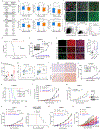


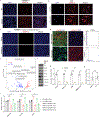
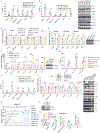
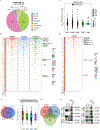
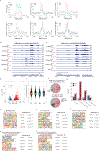


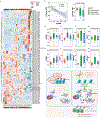




Comment in
-
Using epigenetic modifiers to target cancer stem cell immunoevasion.Cancer Cell. 2021 Dec 13;39(12):1573-1575. doi: 10.1016/j.ccell.2021.11.003. Cancer Cell. 2021. PMID: 34906316
References
-
- Chen DS & Mellman I Elements of cancer immunity and the cancer-immune set point. Nature 541, 321–330 (2017). - PubMed
Publication types
MeSH terms
Substances
Grants and funding
LinkOut - more resources
Full Text Sources
Medical
Molecular Biology Databases

